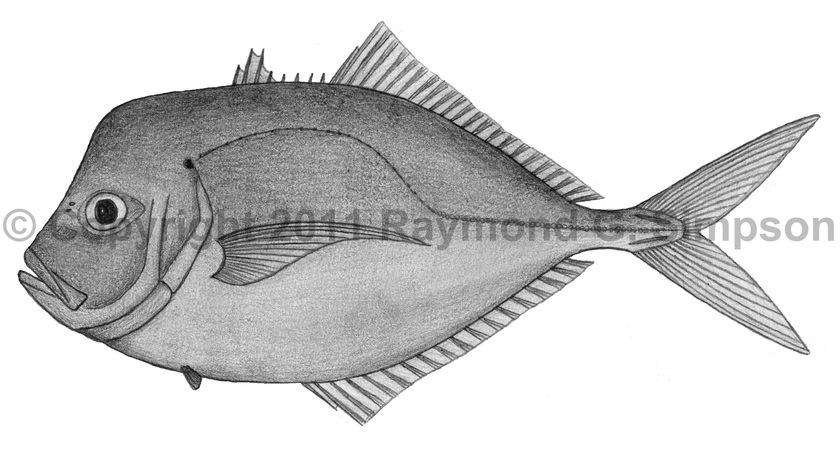
Common Name
Atlantic Moonfish
Year Described
Mitchill, 1815
Identification
Dorsal Fin: 8 spines, followed by I, 21-24
Anal Fin: 2 spines (resorbed in large fish), followed by I, 16-19
Pelvic Fin: I, 5
Gill Rakers: 7-10 upper, 27-35 lower; 34-44 total
Vertebrae: 10 precaudal, 14 caudal
Body short, very deep, and extremely compressed in cross-section. Body depth 46.0-51.5% in FL. Head profile steep and concave (straight in S. vomer). Mouth subterminal at base of head. Eye moderately small (3.4-3.7 in HL). Jaw extends about to anterior margin of eye. Teeth rather small. Second dorsal fin with a weak anterior lobe. Anal fin with no obvious lobe. Pelvic fin tiny. Pectoral fin falcate and rather large. Lateral line strongly arched anteriorly, and posterior portion straight with 7-17 weak scutes over the caudal peduncle. Body smooth to the touch with scales tiny and embedded where present.
Juveniles have the first four spines of the dorsal fin greatly elongated (about equal to body depth), but the filaments are resorbed in larger fishes (illustrated).
Color
Body is brilliant silver with bluish sheen dorsally. A dark spot is often present on upper opercle. A dark area on caudal peduncle. Fins clear, but dorsal lobe and caudal fin is often yellowish. Juveniles with a dark blotch over the lateral line.
Size
Common to 24cm. Maximum size to 33cm.
Habitat
Inshore waters from the surface to 54m. Forms schools. Juveniles pelagic near the surface.
Range
Continental waters from Nova Scotia to Argentina. Not in the Caribbean islands.
References
Smith-Vaniz, W.F. 2003. Carangidae (pp 1426-1468). In: Carpenter. 2003. The living marine resources of the Western Central Atlantic v. 3.